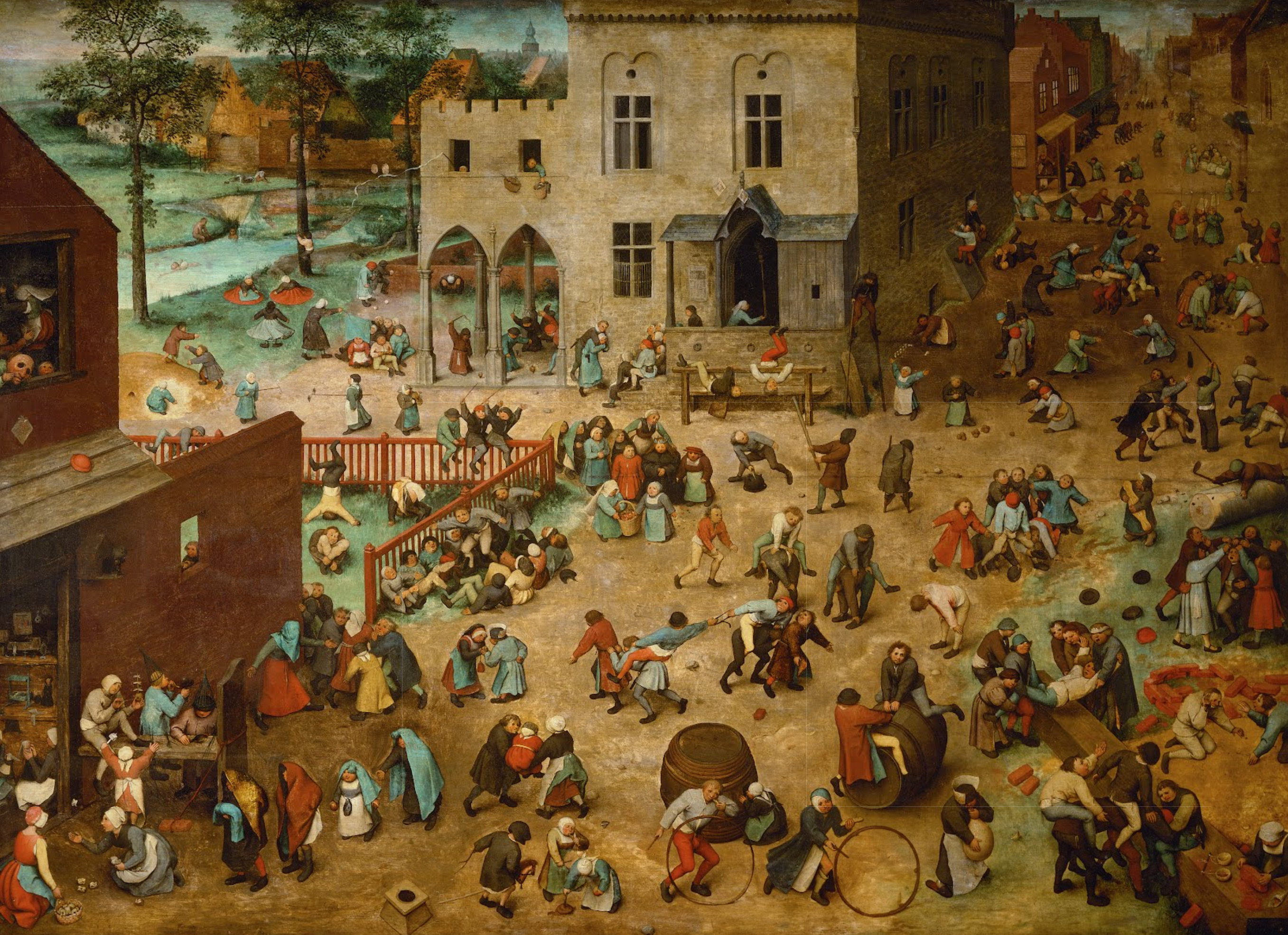A wimmelbilderbuch (German, literally meaning “teeming picture book”), wimmelbook, search-and-find, or hidden picture book is a type of large-format, wordless picture book. It is characterized by full-spread drawings (sometimes across gatefold pages) depicting scenes richly detailed with humans, animals, and objects. Typically made for children, the drawings are filled with characters and items that may be discovered.
Hieronymus Bosch, Pieter Brueghel the Elder and Hans Jurgen Press are regarded as the fathers of the format.

From: Reading as Playing, The Cognitive Challenge of the Wimmelbook by CORNELIA RÉMI:
“Wimmelbooks are a type of wordless picturebooks which display a series of panoramas teeming with an immense number of characters and details. They constitute a narrative threshold genre with the potential to accompany children a long way on their path to literacy and introduce them to different strategies of coping with the world and telling stories. In contrast to puzzle or search books, wimmelbooks rely on their readers to find their own way through the rich material they contain and do not direct their attention by phrasing explicit search tasks. They allow for manifold reading options and encourage a highly active response from children and adults alike, which rightfully might be described as a form of playing.”
https://www.academia.edu/220615/Reading_as_Playing_The_Cognitive_Challenge_of_the_Wimmelbook





